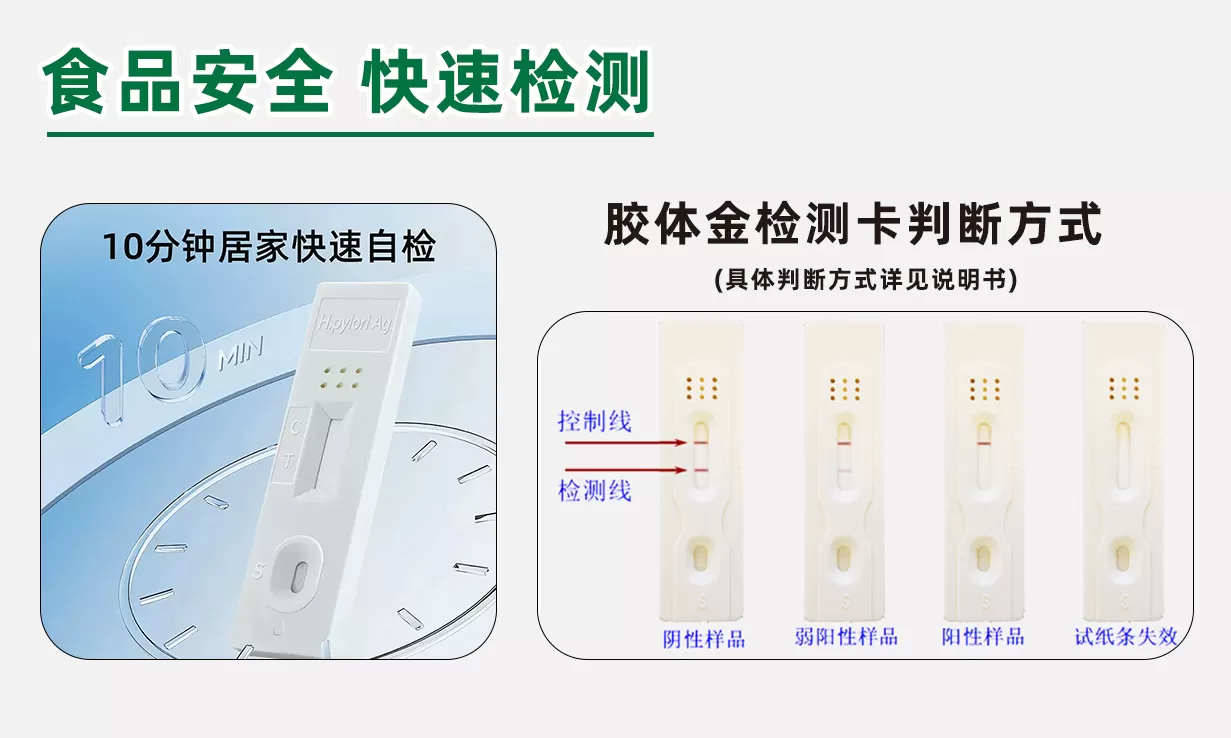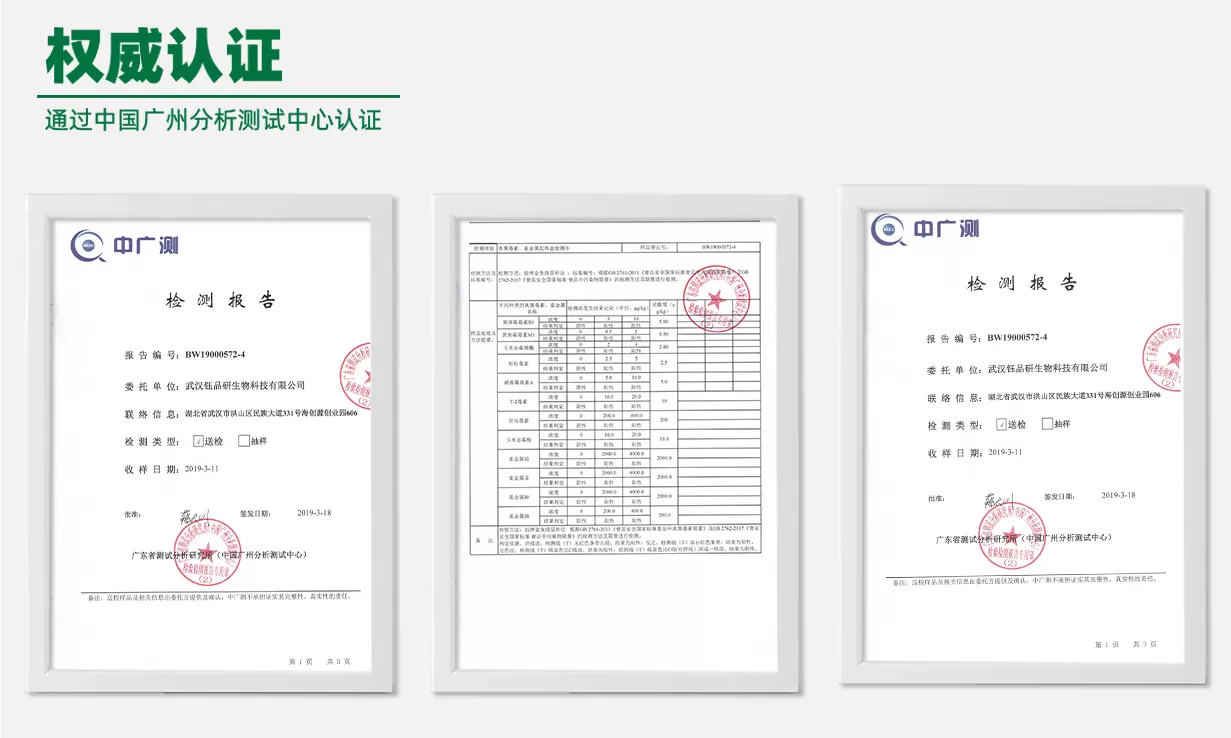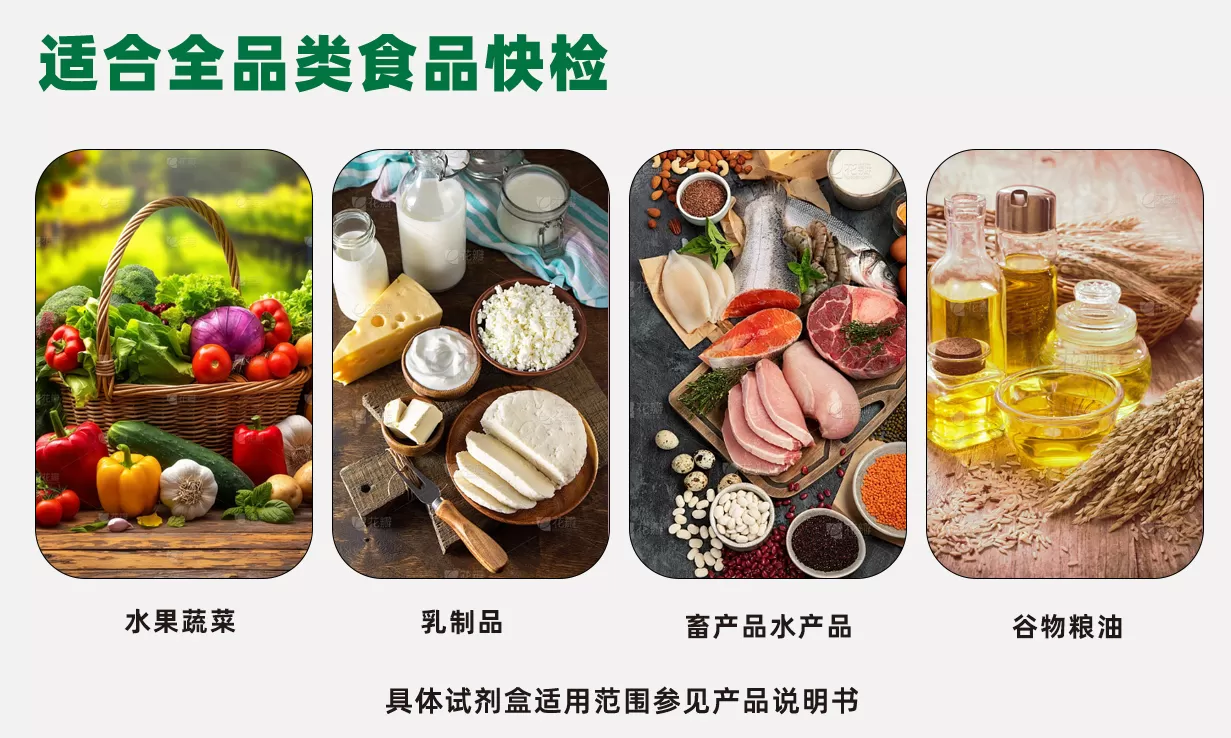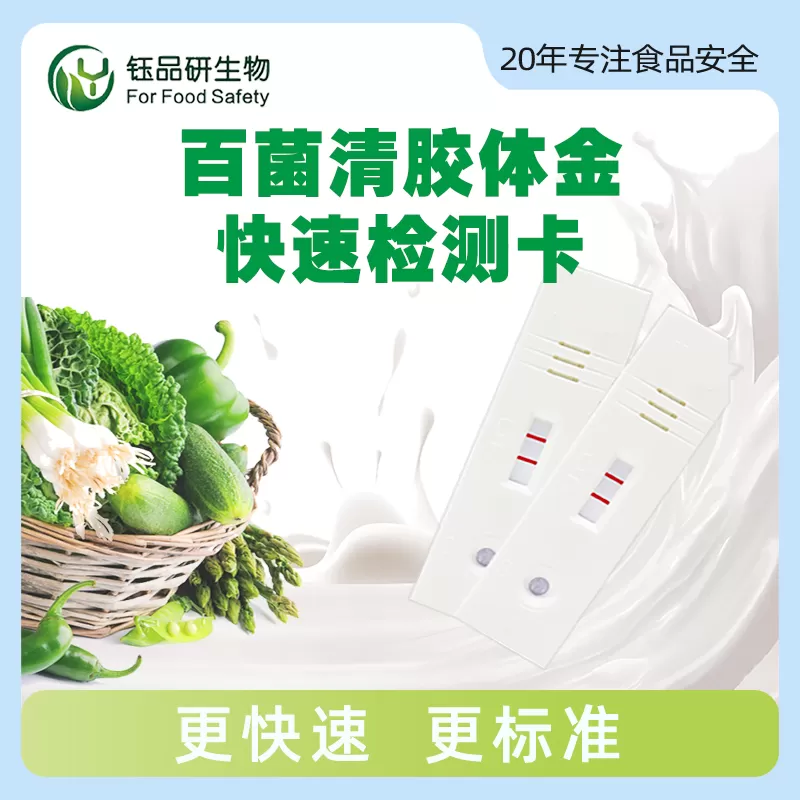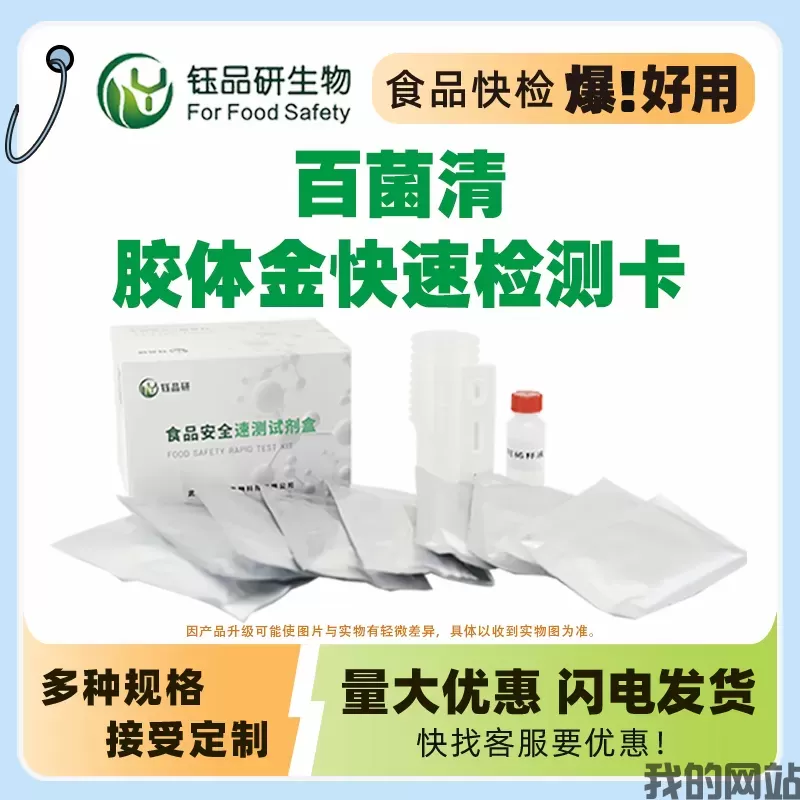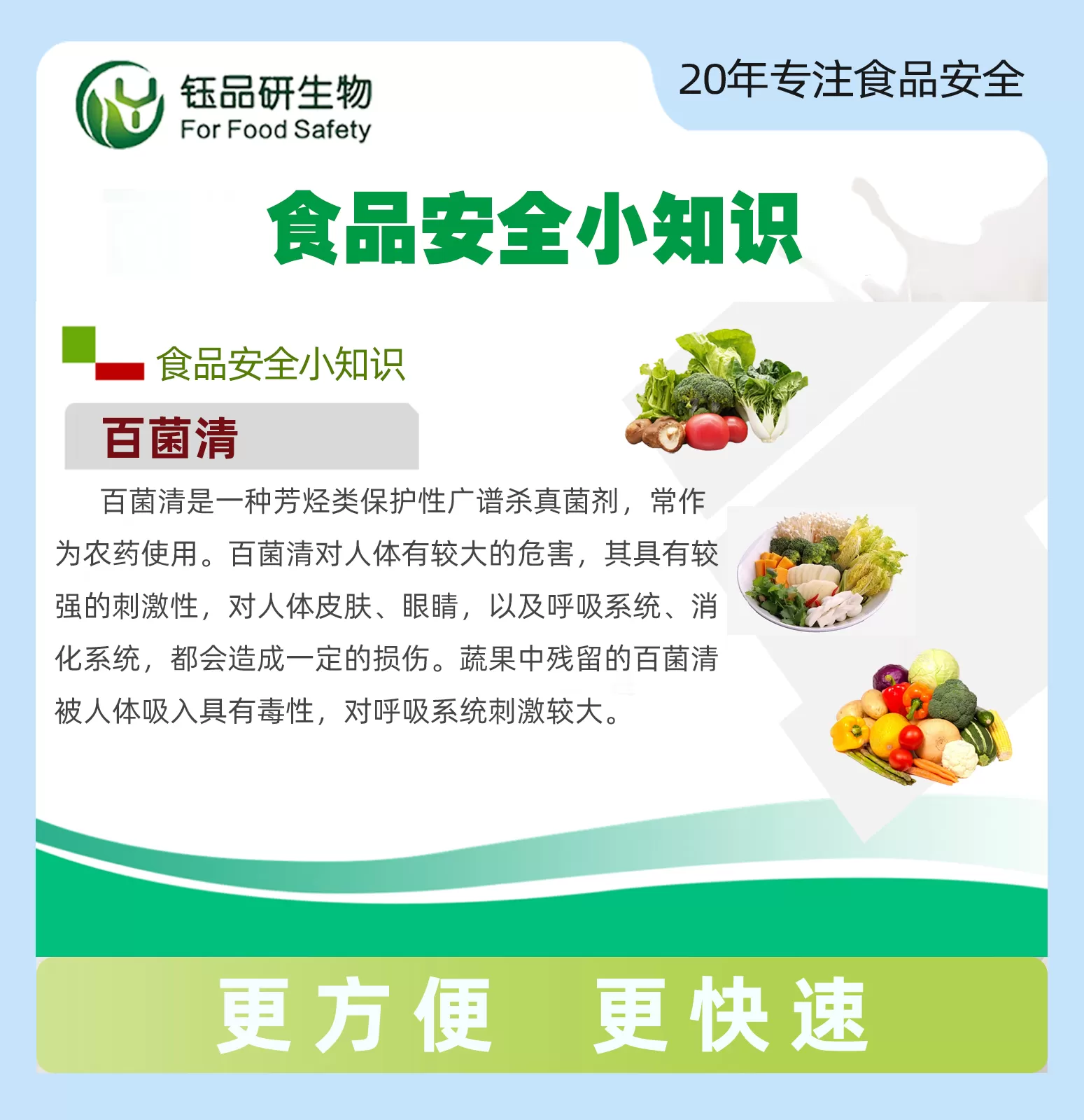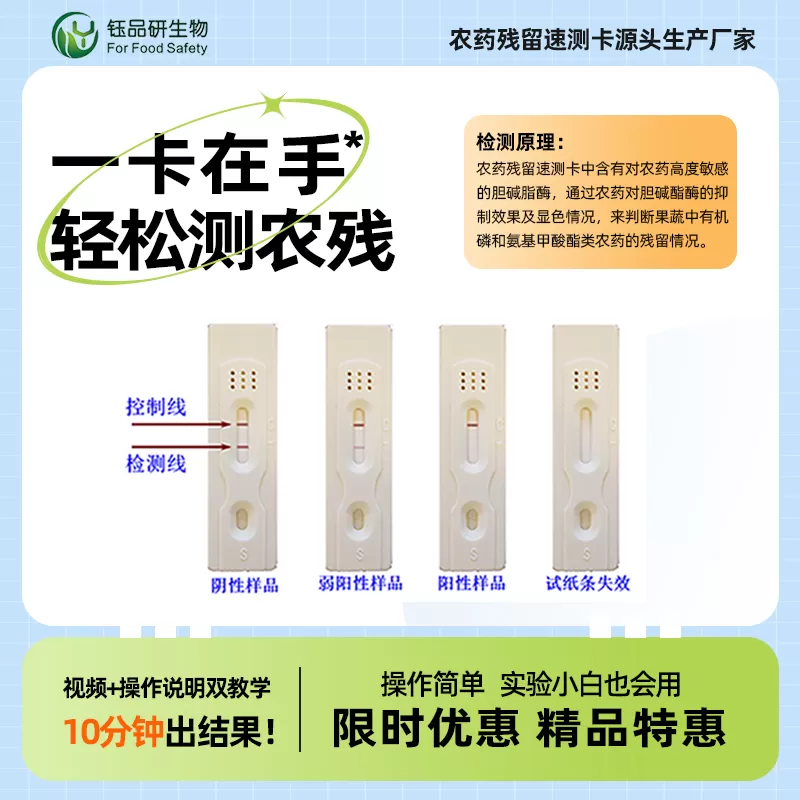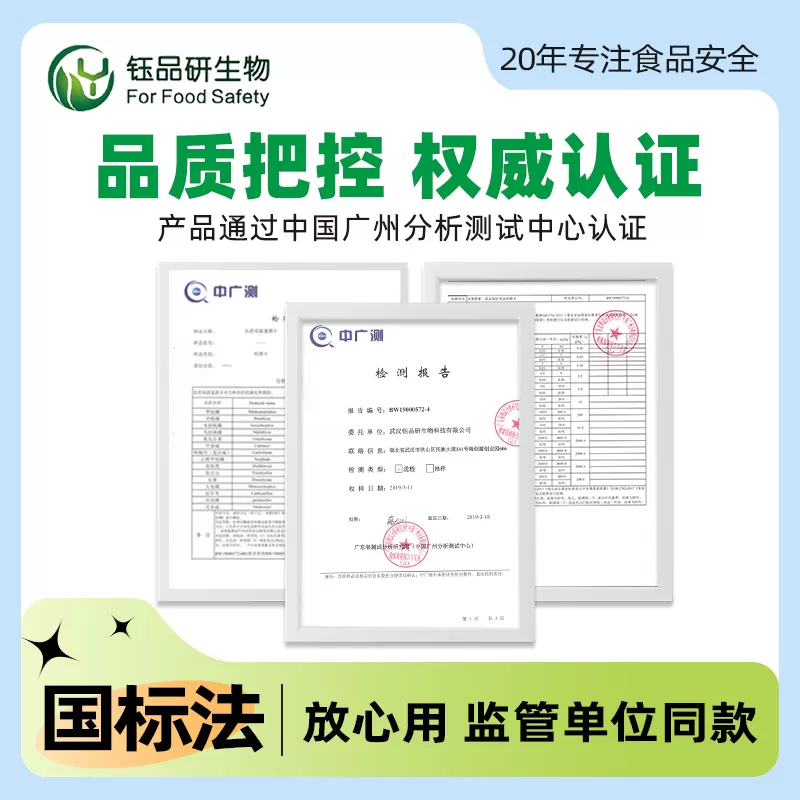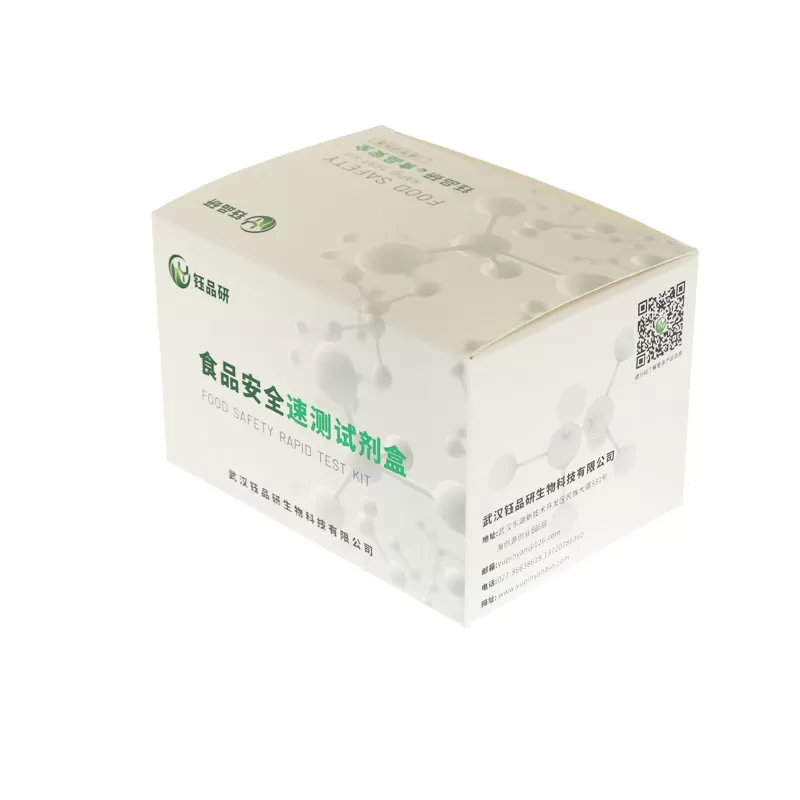Chlorothalonil Colloidal Gold Rapid Detection Card Instruction Manual
1 Principle and Use
This product is made of the principle of competitive inhibition of colloidal gold immunochromatography for the detection of chlorothalonil pesticide residues in vegetables and fruits. After the sample solution is dropped into the sample hole of the detection card, the chlorothalonil in the sample solution binds to the gold standard antibody, thereby preventing the gold standard antibody from binding to the chlorothalonil conjugate on the cellulose membrane. The detection result is judged by the color depth of C and T lines.
2 technical indicators, detection limit: 0.02 mg/kg (ppm)
3 You need to bring your own tools
electronic balance (0.1-100 g), scissors, forceps, disposable cups, vortex mixer, pipette (0.1-1 ml), timer.
4 sample pretreatment
Take an appropriate amount of sample, cut about 1 cm square, weigh 2 grams of shredded sample in the detection tube, add 3 ml of diluent, fully oscillate for 2 minutes, let stand for 1 minute, as the liquid to be tested;
5 sample testing
(1) Tear open the aluminum foil packaging bag of the detection card, take out the detection card/gold microporous/dropper (a total of 3 kinds of consumables), and put it on a flat and clean countertop.
(2) with a pipette or aluminum foil bag matching dropper to absorb the liquid to be tested 120 µL (about 4 drops) in the gold standard micropores, blown with a dropper to completely dissolve the purplish-red material in the pores, let stand horizontally, and wait for the reaction for 2 minutes; all the liquid in the gold standard micropores is added dropwise to the sample well (S) of the detection card;
(3) Start timing after adding the sample, and leave it at room temperature for 8-10 minutes to judge the result, and other time interpretation is invalid.
6 result judgment
Negative (-): T-line color development is deeper than C-line or there is no significant difference with C-line color development, indicating that there is no substance to be tested in the sample or its concentration is lower than the detection limit.
Positive (+): The color development of the T-line is significantly weaker than that of the C-line or the T-line does not develop color, indicating that the concentration of the substance to be tested in the sample is equal to or higher than the detection limit.
Invalid: No C-line appears, indicating that the operation process is incorrect or the test card has failed. In this case, the instructions should be read carefully again and re-tested with a new test card.
7 Precautions
(1) Products that have expired or damaged aluminum foil bags should not be used.
(2) The test card should be restored to room temperature and opened when taken out of the refrigerator. The opened test card should be used as soon as possible to avoid failure after moisture.
(3) Do not touch the white film surface in the center of the test card.
(4) The liquid extraction dropper should not be mixed to avoid cross-contamination.
(5) The liquid to be tested should be clear, free of cloudy particles, and free of bacterial contamination, otherwise it will easily lead to abnormal phenomena such as blockage and inconspicuous color development, which will affect the judgment of experimental results.
(6) Please store the reagent in a place that is not easy for children to contact, and do not eat the equipped reagent.
(7) If you need to directly test the standard product, please prepare it with the diluent provided in the kit.
8 Storage and shelf life
(1) Storage conditions: 4-30 ° C Store in the dark, do not freeze.
(2) Shelf life: 1 year, see the outer packaging for the production date.
9 kit composition
specification
composition
10 times/box
20 times/box
test card (containing gold standard micropores, dropper, desiccant)
10 parts
20 parts
chlorothalonil dilution
1 bottle
5 ml test tube
10 pieces
20 pieces
1 ml straw
10 pieces
20 pieces
manual
1 parts
1 parts

